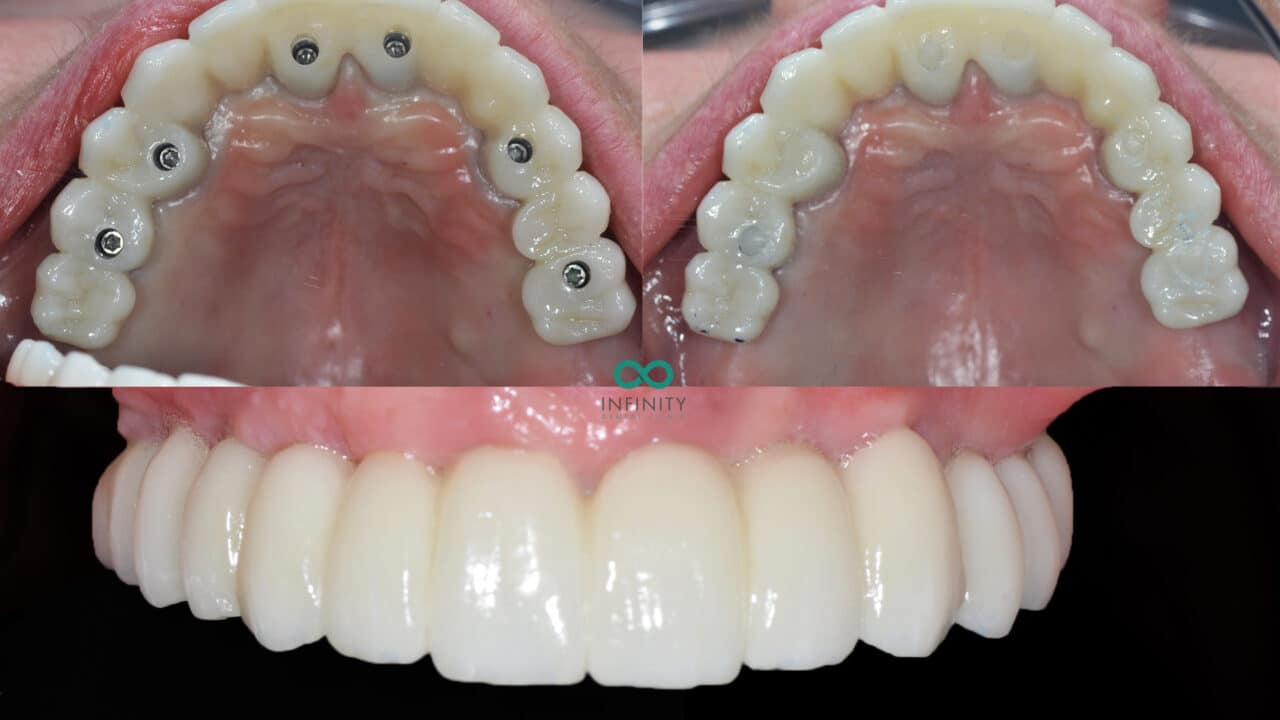The Definitive Guide to Dental Sense
The Definitive Guide to Dental Sense
Blog Article
Some Known Details About Dental Sense
Table of ContentsThe 7-Minute Rule for Dental SenseThe Facts About Dental Sense UncoveredRumored Buzz on Dental SenseThe Ultimate Guide To Dental Sense
are medical gadgets surgically implanted right into the jaw to bring back a person's capacity to eat or their look. They provide support for man-made (phony) teeth, such as crowns, bridges, or dentures. When a tooth is lost because of injury or illness, a person can experience difficulties such as rapid bone loss, faulty speech, or adjustments to eating patterns that cause discomfort.Oral implant systems are composed of a dental implant body and dental implant joint and might also include an abutment fixation screw. Dental implants. The dental implant body is operatively put in the jawbone in place of the tooth's root. The dental implant abutment is generally connected to the implant body by the abutment addiction screw and extends via periodontals right into the mouth to sustain the connected man-made teeth
(https://www.goodreads.com/user/show/186244556-matthew-music)Structure of The Oral Implant System selecting oral implants, speak to your dental copyright about the possible benefits and dangers, and whether you are a prospect for the treatment. Things to think about: Your overall health is a crucial consider identifying whether you are a good candidate for oral implants, exactly how long it will certainly require to recover, and for how long the implant might remain in area.
Cigarette smoking may impact the healing process and decrease the lasting success of the implant. The healing procedure for the implant body may take numerous months or longer, during which time you typically have a momentary abutment instead of the tooth. the dental implant procedure: Carefully adhere to the dental hygiene instructions offered to you by your dental supplier.
Not known Incorrect Statements About Dental Sense
Implant failure can result in the requirement for one more procedure to fix or replace the dental implant system. Recovers the ability to chew Restores aesthetic appearance Aids keep the jawbone from reducing because of bone loss Maintains the health and wellness of the bordering bone and gum tissues Assists keep adjacent (neighboring) teeth secure Enhances quality of life Damage to surrounding natural teeth throughout implant placement Injury to the surrounding cells throughout surgical procedure, such as sinus perforation Injury during surgery (for example, crack of surrounding jawbone) Inadequate function, such as feeling like the teeth do not bite with each other generally A sensation that the tooth is loosened or twisting in position resulting from an abutment screw loosening Implant body failing (looseness of the implant body) as a result of systemic infection, which might be more probable in clients with unrestrained diabetes mellitus as a result of regional infection in bone and periodontals sustaining the dental implant body because of postponed recovery, which might be most likely in individuals who smoke Difficulty cleansing the gums around the implant, resulting in bad dental hygiene Neglected gum disease Post-surgical pins and needles as a result of nerve impingement or damage Always inform health care carriers and imaging service technicians that you have dental implants before any kind of magnetic resonance imaging (MRI) or x-ray procedures.
FDA is not knowledgeable about any kind of unfavorable events reported for MRI or x-ray treatments with dental implants. Oral implants systems are normally made of materials that follow international consensus criteria of the International Company for Standardization (ISO) or ASTM International. These requirements have details of what makes a risk-free material.

An oral implant is a structure that replaces a missing tooth. With screw-like devices, the doctor inserts an implant right into the jawbone, and it acts as a support for a man-made tooth, called a crown.
All about Dental Sense
Some people are not eligible for oral implant surgical procedure. It is for oral doctors to operate individuals with: acute illnessuncontrollable metabolic diseasebone or soft cells disease or infectionIf these problems are solved, an individual can have the surgery. In, dental specialists abstain from operating people with: If individuals with any one of the above undergo dental implant surgical procedure, there is a higher threat of the implant failing.

Dental dental implant surgical treatment is an individualized process. Give you time to recover. Affix the article and final crown, bridge or denture.
Next off, your surgeon will carefully position the dental implant right into your jaw. If your dental implant is near the front of your mouth, your dental professional will make a short-lived tooth for you to put on until you heal.
3 Easy Facts About Dental Sense Shown
Your company can inform you what to anticipate in your circumstance. Throughout the recovery stage, your jawbone ought to fuse to the oral implant. This process, called osseointegration, is important for stability and long-lasting success. This process can take anywhere from three to nine months. In some cases, it might take longer.
Once your dental implant heals, your dental professional can affix the joint (small adapter message) and article source your last repair (crown, bridge or denture). This generally takes regarding one hour to complete and might call for a second minor surgical treatment. You shouldn't feel any kind of pain throughout your dental implant procedure due to the fact that your copyright will certainly utilize medicine to numb your periodontals.
Report this page